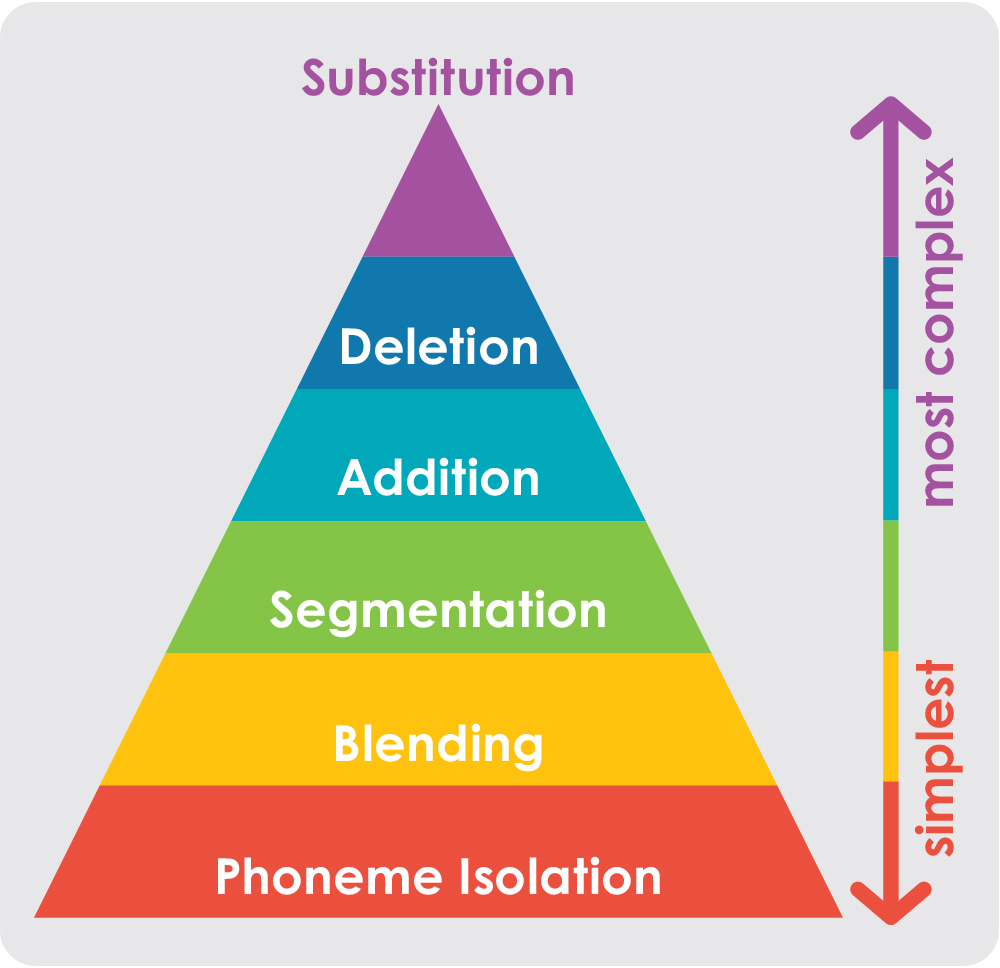Phonemic Awareness, a subset of phonological awareness, is the ability to hear, identify, change, or move sounds, called phonemes, in spoken words.
According to the National Early Literacy Panel, phonological awareness (the category under which phonemic awareness falls) is one of six early variables that spredict literacy development. Other variables include alphabet knowledge, rapid automatic naming (RAN), RAN of objects or colors, writing or writing name, and phonological memory.
Phonemic Awareness Categories:
Isolation - Students will identify a specific sound in a word. For example, you might ask "What is the beginning sound in the word ball?" The student would identify the /b/ sound as the beginning sound.
Blending - Students will be able to put the sounds together to make a word. For example, if you give a student the sounds /m/ /a/ /p/ and ask them for the word, they will be able to tell you the word is map.
Segmentation - Students will be able to pull apart the sounds of a word in order. For example, if you say the word sat, students will isolate the three sounds - /s/ /a/ /t/.
Deletion - Students will be able to take a sound off of a word. For example, if you ask a student to take the /s/ of the word sit, they will be left with the word it.
Addition - Student will able able to add a sound to a word. For example, if you give a student the word it and ask them to add /b/ to the begininng, the will be able to tell you the new word is bit.
Substitution - Students will be able to change a sound in a word to another sound. For example, you may have the word bin and ask students to change the /b/ to /w/. When you ask them what the new word is, they will be able to tell you the word is now win.
Strategies for teaching Phonemic Awareness:
-Show your child printed material & talk to them about the sounds and structure of the words.
-Play letter games or phoneme substitution games.
- Pick a word and take turns switching the first or last sound in the word to see how it changes the word (example:, turn cat into bat or pop into pod).
- Put letters on index cards (example: give your child a, t, and b and ask them to arrange them into bat, and talk about each sound-you can do this with a variety of words-rat, pot, bed, mat, etc.).
- Play a rhyming game.. Take turns thinking of words that rhyme with cat, dog, big, etc. Look at the words, talk about the structure and what makes them rhyme.
-Use auditory, visual, tactile (touch), and kenisthetic (movement) models of sounds.
- Auditory - Have your child clap each sound they hear in a word.
- Visual/Tactile - Write sounds or letters on pieces of paper. Have them rearrange them to change the word. Make letters from play-doh and rearrange those as well.
- Kenisthetic - Have your child jump as they say each sound in a word or recite rhyming words.
How can you help at home?
More information: https://www.youtube.com/watch?v=8JNVzioC7lc
Activies for home: https://www.readingresource.net/phonemicawarenessactivities.html
Activities for home: https://www.thefortuneacademy.org/blog/2017/9/28/what-is-phonemic-awareness
Songs that build phonemic awareness: https://www.ateachableteacher.com/phonemic-awareness-songs/
